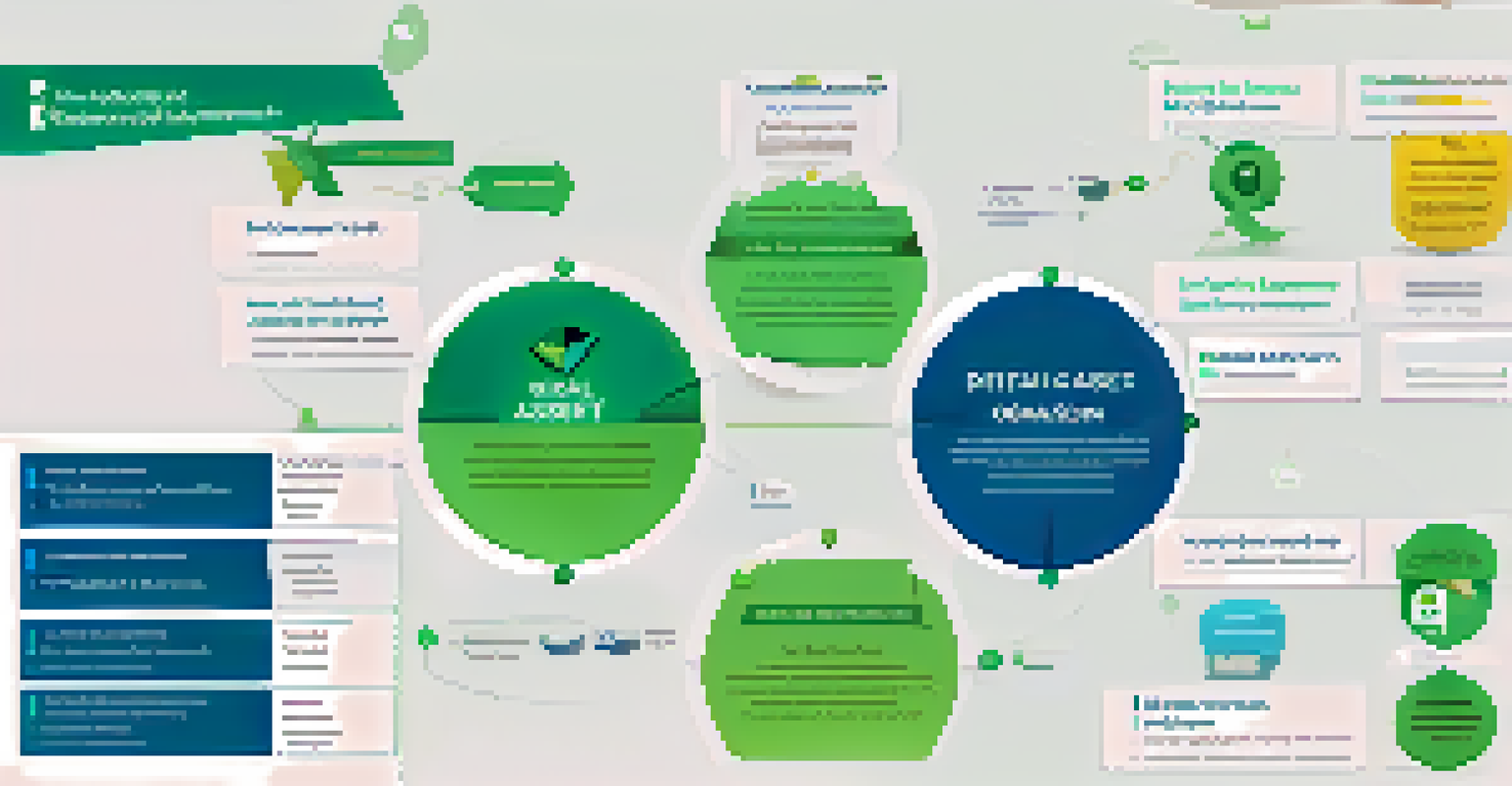How to Create a Digital Asset Management Strategy

Understanding Digital Asset Management Basics
Digital Asset Management (DAM) is the organized storage of digital assets like images, videos, and documents. Essentially, it’s a way to keep your media files in check, making them easy to find and use. Think of it as a digital filing cabinet, where everything has its place and can be accessed swiftly when needed.
Digital Asset Management is not just about storage; it's about empowering teams to work smarter and faster with their digital resources.
By having a solid understanding of DAM, you can streamline workflows, enhance collaboration, and save valuable time. For instance, marketing teams can quickly access brand assets to create campaigns without the hassle of searching through disorganized folders. This clarity not only boosts efficiency but also ensures brand consistency across various platforms.
Moreover, a good DAM strategy will help in preserving the quality of your digital assets. High-resolution images or videos can degrade when saved improperly, leading to poor-quality outputs. Understanding DAM fundamentals is your first step toward protecting and optimizing your valuable digital content.
Identifying Your Digital Asset Needs
Before diving into creating a strategy, it’s crucial to identify what digital assets your organization generates and uses. This can include anything from marketing materials to internal documents and multimedia. Taking stock of these assets will help you understand the scope of your needs.

Consider conducting an audit of your existing assets to pinpoint gaps and redundancies. For example, you might discover multiple versions of the same logo scattered across different folders. This type of redundancy can lead to confusion, and knowing your assets will help you streamline and centralize.
Importance of Digital Asset Management
Digital Asset Management (DAM) streamlines workflows and enhances collaboration by organizing digital assets for easy access.
Additionally, think about who will be using these assets and how they will access them. Different teams may require different types of assets, so understanding their needs can guide how you structure your DAM. This approach ensures that everyone has the resources they need at their fingertips.
Setting Clear Goals for Your DAM Strategy
Every effective strategy starts with well-defined goals. What do you hope to achieve with your DAM system? Whether it’s improving collaboration, reducing asset retrieval time, or increasing brand consistency, having clear objectives will guide your decisions moving forward.
The right tools can enhance collaboration and creativity in ways we never imagined.
For instance, if your goal is to reduce asset retrieval time, you might prioritize organizing files with clear naming conventions and metadata. This means that when someone searches for 'summer campaign video,' they will find it without sifting through irrelevant files. Setting these goals provides a roadmap for your DAM implementation.
Furthermore, involving team members in goal-setting can foster a sense of ownership and accountability. Gathering input from various departments will ensure that the strategy aligns with the organization’s overall objectives, making it more likely to succeed.
Choosing the Right DAM Software
With a plethora of Digital Asset Management software available, choosing the right one can feel overwhelming. Start by evaluating your organization’s specific needs, such as storage capacity, user access, and integration with existing tools. This will help narrow down your options.
Consider reaching out to vendors for demos or trials to see how their software aligns with your requirements. For example, some platforms may offer robust tagging features, while others might excel in user-friendly interfaces. Testing these features firsthand can provide valuable insights.
Identifying Asset Needs is Crucial
Conducting an audit of existing digital assets helps pinpoint gaps and redundancies, ensuring a more effective DAM strategy.
Don’t forget to think about scalability. As your organization grows, so too will your digital asset needs. Opt for a solution that can grow with you, so you won’t have to switch systems down the line. Remember, the right software can make or break your DAM strategy.
Implementing Best Practices for Asset Organization
Once you’ve chosen your DAM software, it’s time to implement best practices for organizing your assets. A consistent folder structure is essential; categorize your assets by type, project, or department to make retrieval intuitive. Think of it like organizing a library, where every book has its designated shelf.
Moreover, incorporating metadata—descriptive information about your assets—can enhance searchability. For instance, tagging photos with keywords like 'event,' 'date,' and 'location' allows users to find what they need quickly. This not only saves time but also improves collaboration among teams.
Regularly reviewing and updating your asset organization is key to maintaining efficiency. As new projects arise and older assets become obsolete, keeping your digital library tidy ensures that users can always find what they’re looking for without hassle.
Training Your Team on the DAM System
Implementing a DAM strategy is only half the battle; training your team on how to use the system effectively is equally important. Schedule training sessions that can cover everything from basic navigation to advanced features of the software. This ensures everyone feels comfortable with the system and knows how to utilize it effectively.
Encourage ongoing education by creating resources such as user guides, video tutorials, or FAQs. These tools can serve as handy references for team members, especially as new features roll out or as the system evolves. A well-informed team can maximize the potential of your DAM strategy.
Training Maximizes DAM Effectiveness
Providing comprehensive training and resources for your team ensures they can effectively utilize the DAM system to its fullest potential.
Fostering a culture of sharing knowledge can also enhance collaboration. Encourage team members to share tips and best practices they discover while using the system. This collective learning environment can lead to improved processes and a more efficient use of digital assets.
Measuring Success and Making Adjustments
To know if your DAM strategy is effective, you need to establish metrics for success. These could include measuring the time it takes to retrieve assets, how often assets are used, or user satisfaction ratings. Regularly assessing these metrics will provide insights into how well your strategy is performing.
Don’t hesitate to make adjustments based on your findings. If users are struggling to find assets, it might be time to revisit your organization methods or provide additional training. Being flexible and responsive to feedback ensures that your DAM strategy continues to meet your organization’s needs.

Lastly, celebrate successes along the way. Recognizing improvements, whether it’s a reduction in retrieval time or positive user feedback, can motivate your team and reinforce the value of the DAM system. After all, a successful strategy is one that evolves and adapts over time.